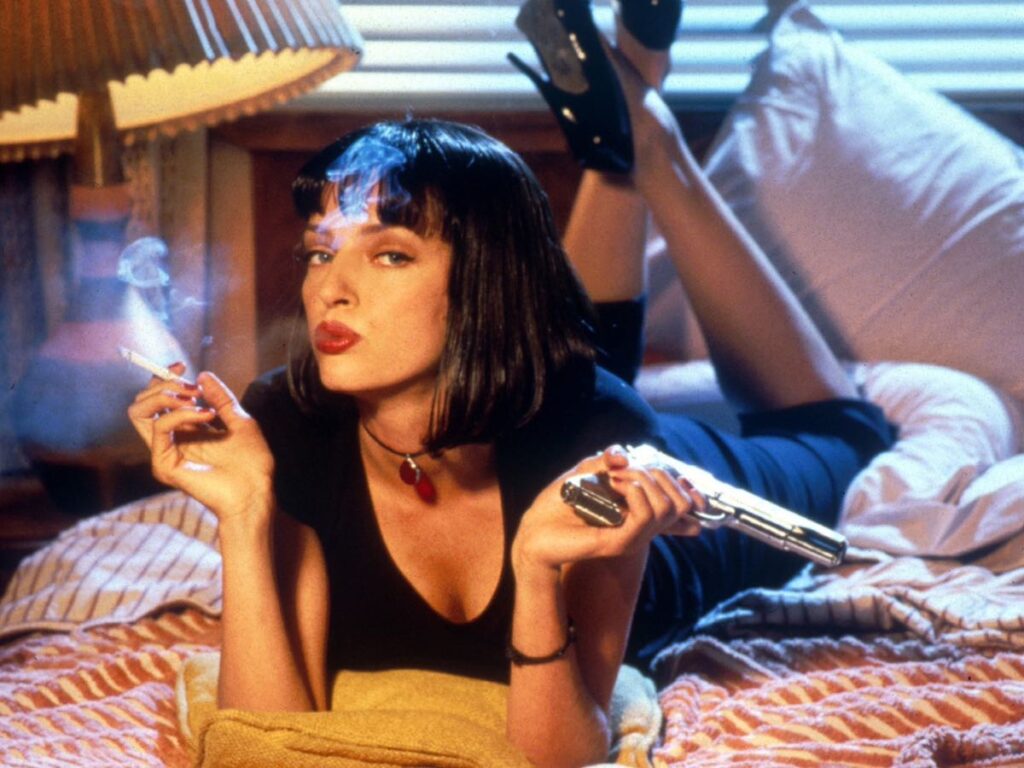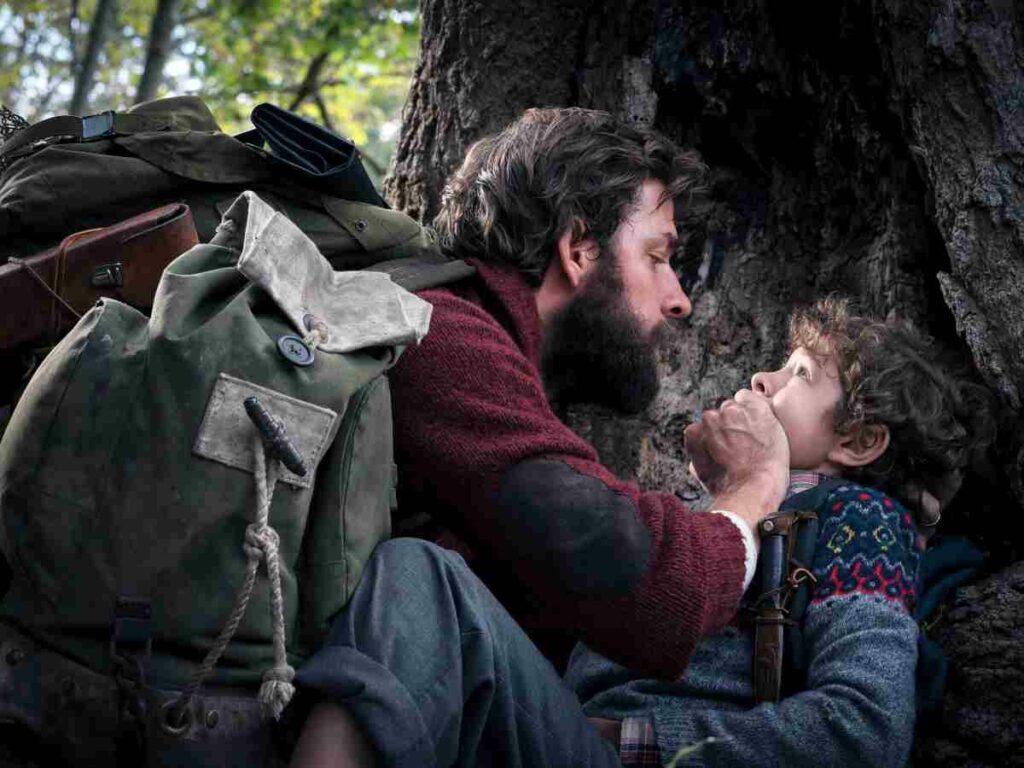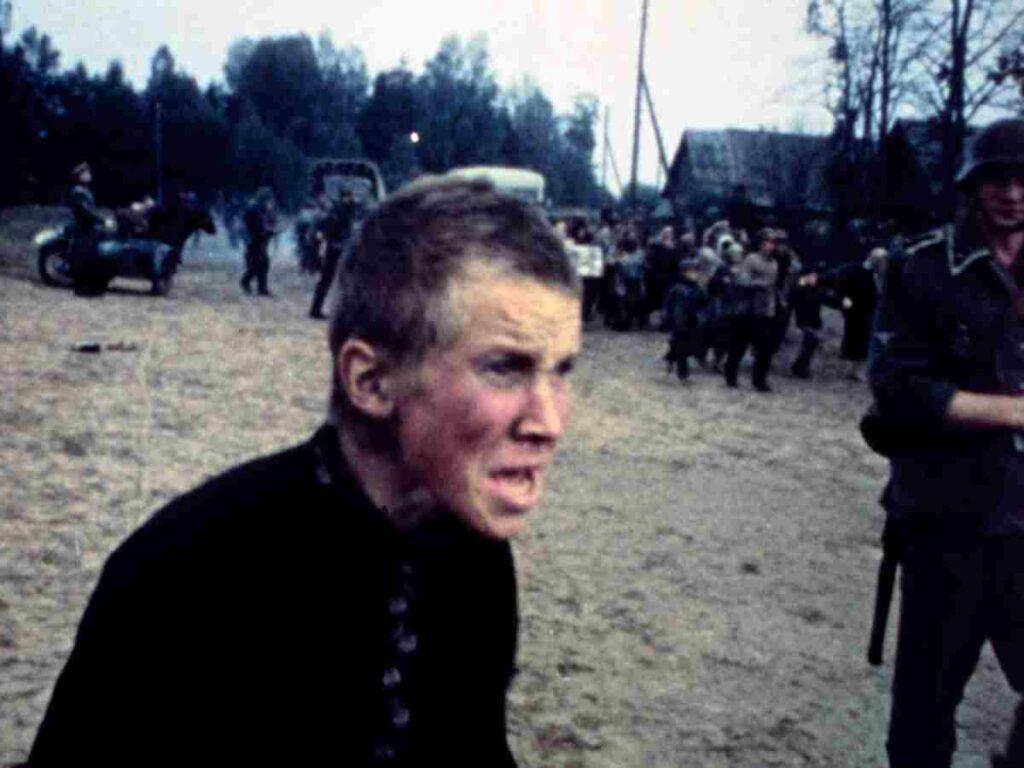After winning the Palme d’Or at Cannes 1994, Pulp Fiction has gone on to become one of the most popular cult films of the last decade. A year later, it swooped off an Academy Award for Best Original Screenplay, earning the status of one of the boldest and compelling gems of world cinema. The success of the film heralded a new dawn on the independent cinema movement of Hollywood. Co-written with Roger Avary, Quentin Tarantino‘s Pulp Fiction is considered a seminal work due to its non-linear structure. The film begins with a scene and then shuffles between flashbacks and flashforwards to flesh out a complex storytelling structure.
The complex synopsis can briefly be summed up as a series of coincidental events where the lives of two hitmen, an ageing boxer, an aspiring actress, a ruthless gangster boss, and two small-time wannabe bandits get entangled in a tale of crime, surprise and absolution.
Let’s deep dive into the intricate world of these characters created by Tarantino and Avary. I’ve divided the entire structure of the film into the following sequences for the convenience of analysis. Each of these sections introduces us to the characters and situations of the film, while unfolding the sophisticated nature of the screenplay. The sequences are arranged in order of their occurrence in the film.
1. Introduction of Pumpkin and Honey Bunny
Pulp Fiction begins with the dictionary meaning of the title of the film. One may wonder what is the purpose of introducing the definition at the beginning of the film? This is Tarantino’s style of making the viewers aware that he is going to subvert the popular notion of ‘pulp fictions’, which are essentially crime novels characterized for their graphic violence and punchy dialogues. He is going to take the viewers on a cinematic journey with his out-of-the-box style of storytelling.
The film begins in a diner and we are introduced to two eclectic characters, Pumpkin (Tim Roth) and Honey Bunny (Amanda Plummer) having breakfast. They discuss amongst themselves the prospect of committing an armed robbery. He tells her a story of how a man robbed a bank by falsely convincing the teller that someone was holding his daughter’s ransom over the phone. As the discussion ensues they decide to rob the diner where they are eating.
They have two reasons for making the diner their target. Firstly, there is no risk as there are no armed guards in the restaurant. Secondly, the place is full of customers whose wallets they can steal.
In this scene, we hear extracts of conversation between two mob hitmen Jules Winnfield (Samuel L. Jackson) and Vincent Vega (John Travolta) at a nearby table in the background. Vincent gets up and goes to the bathroom. But we are not able to identify him. Pumpkin and Honey Bunny agree to commit the act and passionately kiss each other. Both brandish their guns and hold the restaurant hostage. The screen freezes and the title of the film appears.
Takeaways:
In this sequence Tarantino introduces us to the world of his narrative, which will include elaborate dialogue scenes, interesting, unpredictable characters, violence, guns, conversations over food and jazzy music. Everything about the film is going to be cool, intriguing and surprising at the same time. Money and greed will play a key factor within the narrative. People will lose their lives and relationships will be betrayed for money. The two characters Jules and Vincent are also introduced in the opening scene as a clever trope by the filmmaker. Both will play a significant role later in the scene. We’ll return to this scene as a closure during the climax.
2. Introduction of Jules and Vincent
Next, we are introduced to Jules and Vincent. They are carpooling and discussing the cultural differences between America and Europe and random stuff. Once they reach their destination they park their vehicle and head for their mission. They extract their ammunition from the trunk of the car and walk into an apartment building. On their way, they discuss how their boss Marsellus Wallace (Ving Rhames) threw a man off a balcony for giving a foot massage to his wife Mia Wallace (Uma Thurman). Vincent informs Jules that Marsellus has ordered him to take care of Mia while he’s off on a vacation in Florida.
As Vincent and Jules enter an apartment building we are introduced to three men. Jules asks them about the suitcase and one of them replies that it’s in the cupboard. Vincent gets the briefcase and when he opens it the content inside glows. Bret apologizes to them for betraying Marsellus. Jules nonchalantly shoots the man lying on a sofa and then recites Ezekiel 25:17. Jules and Vincent then fire at Brett multiple times, killing him instantly.
Takeaways:
In this sequence the entire conversation in this sequence between Jules and Vincent reveals their camaraderie. Both have a relaxed and unconcerned attitude towards their profession as henchmen of a gangster. The subject of foot massage creates a kind of a set-up as it builds fear in the mind of Vincent regarding his sexual tension with Mia later in the film. Jules recites Ezekiel 25:17 to infuse fear into the mind of the men he is about to kill. By doing so he wants to feel superior and justify his act of violence while guilting his opponent. He’ll recite it once again at the end of the film. So Ezekiel 25:17 becomes a kind of motif within the narrative. Finally, the glowing content in the suitcase is never revealed in the film. It acts as a MacGuffin.
3. Introduction of Marsellus and Butch
We are introduced to the character of Marsellus and Butch Coolidge (Bruce Willis) in a bar. Marsellus is a gangster and makes an offer to Butch, who is a boxer nearing the end of his career. Marsellus tells Butch to throw away his next boxing match in exchange for an envelope full of cash. Butch accepts the offer. In the meantime Jules and Vincent enter the same bar, wearing casual T-shirts.
As Butch is about to leave, a heated exchange takes place with Vincent. But the situation doesn’t escalate out of control as Marsellus calls Vincent over.
Takeaways:
We are introduced to the character of Marsellus in this sequence, who is controlling and rude. He has no respect for other’s opinions and feelings but demands respect from others and will have to pay the price of his behavior later in the film. The boxing match will play a key role later in the narrative, as Butch will betray Marsellus. The tension between Butch and Vincent is again used as a set-up that will have a pay-off later in the narrative. Also, the t-shirt worn by Jules and Vincent will play a key role later in the story.
4. Introduction of Lance and Mia
In the next scene, we’re introduced to Lance (Eric Stoltz), a drug dealer by profession. Vincent buys three grams of hero** from him, shoots up and heads to Mia’s house. As we’re introduced to Mia, we find her doing cocaine in the bathroom. Vincent fixes himself a drink before both of them head to a restaurant named Jack Rabbit Slim’s. Both talk over milk and ice-cream shake. Mia talks about her failed television pilot and the rumor surrounding the foot massage. Mia forces Vincent to participate in a twist contest, which they win.
Back at the house, Mia makes a grave mistake while Vincent is using the bathroom. She presumes Vincent’s heroin for cocaine and snorts it. She immediately becomes unconscious and collapses on the floor. Vincent panics and rushes her to Lance’s house. Lance is reluctant to help him initially. But later Lance, with help from his partner Jody (Rosanna Arquette) helps Vincent with an adrenaline shot from the refrigerator. Tension arises when they’re not able to decide how to administer the shot. Vincent takes control of the situation and slams the needle into Mia’s heart. He successfully revives her back to life.
At the end of the night, in a light-hearted moment, Mia tells Vincent a joke from her television pilot, which she previously refused to reveal. Both of them decide to keep the incident a secret.
Takeaways:
The heroin that Vincent purchases from Lance has been used as a set-up at the beginning of the sequence. The moment Vincent picks up Mia from her residence till the dance sequence arouses curiosity in viewers. Whether he’ll end up sleeping with her and put his life in jeopardy? Vincent even asks Mia if Marsellus did order to throw Antoine out of the window for giving her a foot massage. Mia denies it and Vincent is relieved. When Vincent drops Mia back at her place we expect that there’s still time for some intimacy between them. But Tarantino thwarts our expectations with the drug overdose incident. Thus, the heroin planted earlier in the sequence is used as a pay-off. Finally, both Vincent and Mia spend the rest of the night engaged in a candid conversation.
Overall, the entire sequence functions as a playful, comic, romantic and suspenseful moment providing a momentary respite from the blood and gore in the rest of the film.
5. Introduction of Captain Koons and Fabienne
In this sequence, we go to a flashback scene when Butch was a child. We are introduced to Captain Koons (Christopher Walken), who was imprisoned in a P.O.W. camp in Hanoi where Butch‘s father died. He gives him a gold wristwatch, a family heirloom.
As the flashback ends and we return to the present, we’re informed that the adult Butch has killed his opponent in the boxing match. He’s betrayed Marsellus and will now have to make plans to escape from the consequences.
He gets inside a cab and reaches the nearby motel where his girlfriend Fabienne (Maria de Medeiros) is waiting for him. The next morning when both of them are about to leave the country for good, Butch realizes that his gold watch is missing. He returns to his apartment and retrieves the watch. He notices a gun on the counter and fires a shot from it accidentally killing Vincent.
As Butch escapes the spot he is spotted by Marsellus, who was crossing the street. Butch injures Marcellus with his car but gets injured in a car crash himself. The injured Marcellus chases Butch and both of them end up at a pawnshop where the owners take them captive.
In the basement of the shop, a sadi** man rap** Marcellus. Butch manages to free him but before he escapes he helps Marsellus to avenge his tormentors. Butch and Marsellus make peace with one another. Butch rides on a motorcycle back to the motel and with his better half, Fabienne, heads for a new beginning.
Takeaways:
This sequence begins with a set-up and this time Tarantino uses it in the form of a gold wristwatch. Butch’s search for the watch in the morning before leaving the city takes him to his apartment. This results in the accidental killing of Vincent. Once Butch leaves his apartment trouble escalates as he runs over Marcellus and then a chase ensues, landing both into trouble. Butch manages to free himself from captivity. But before leaving the pawnshop his conscience prods him to help Marcellus. It adds a layer of compassion to Butch’s character. Tarantino highlights that all the characters inhabiting the film aren’t evil. So, Butch and Fabienne deserve a happy ending in the film. Since, both Vincent and Marcellus are involved in wrongful activities they are punished for their deeds in different ways.
6. The Finale
This sequence begins with the final flashback of the narrative. We go back to the scene where Jules is reciting Ezekiel 25:17 before killing Brett. As he kills Brett, an armed man who was hiding in the bathroom emerges with fury. He aimlessly fires one shot after another at Jules and Vincent. But none of them gets killed as the bullet miraculously misses. The armed man gets killed. Jules and Vincent forcefully take the only man surviving in the apartment as captive. But while they’re on their way, Vincent accidentally shoots him and blood is splattered inside the car.
Jules and Vincent take the help of a friend Jimmie, who helps them clean the vehicle. In an elaborate process, the car is cleaned and the dead body hidden in the trunk. Jules and Vincent get rid of their bloodstained clothes and wear a T-shirt. The car is taken to a junkyard and destroyed.
Jules and Vincent take a cab and decide to get breakfast at the same restaurant, which Pumpkin and Honey Bunny are about to rob. Vincent heads for the toilet and Pumpkin and Honey Bunny execute their plan. When Pumpkin asks for Jules’ wallet and the briefcase, Jules mesmerizes Pumpkin with the bright light emitting from the suitcase. As Pumpkin is distracted, Jules holds him at gunpoint. Jules recites Ezekiel 25:17 again. Vincent emerges from the bathroom, and a Mexican standoff-like situation ensues. But Jules takes complete control of the situation. He allows Pumpkin and Honey Bunny to take the wallet and exit the scene. Both Jules and Vincent leave the diner in elan with the briefcase in hand.
Takeaways:
The final sequence of the film brings a circularity to the narrative and highlights the theme of mortality and fate. Jules and Vincent escape the nearly death-like situation due to some divine forces. At the sametime Vincent unfortunately takes away an innocent life. Their vehicle had to be destroyed to hide the evidence of accidental murder. A garden hose washes away the bloodstains, as they scrub their naked bodies with soap. They wear a fresh T-shirt. All this action symbolically implies that both of them clean themselves from the sins of the past. They have gained a fresh perspective, which is evident in the next scene.
In the restaurant scene, Jules informs Pumpkin that he is in a “transitional period,” and would rather not kill anyone. He further tells him he’s now realized the true meaning of Ezekiel 25:17. He allows Pumpkin and Honey Bunny to keep the cash and walk away unharmed. Jules also uses the mystifying power of the briefcase to manipulate the situation. Yet, the viewers are never revealed the content inside it. So, the briefcase not only serves as a MacGuffin but also a hidden object that guides the fate of individuals.
Throughout the screenplay the writers have adopted unconventional narrative methods. But at the end of the film they follow the conventional formula of depicting how one of the principal characters of the film, Jules, changes his world views. Besides, despite being a film dealing with violence, blood and uncertainty, the film doesn’t have a dark ending. It concludes on a happy note and is ultimately a satisfying experience for viewers.
For in-depth understanding of Tarantino and Roger Avary’s narrative strategies, you can download the Pulp Fiction script here.




